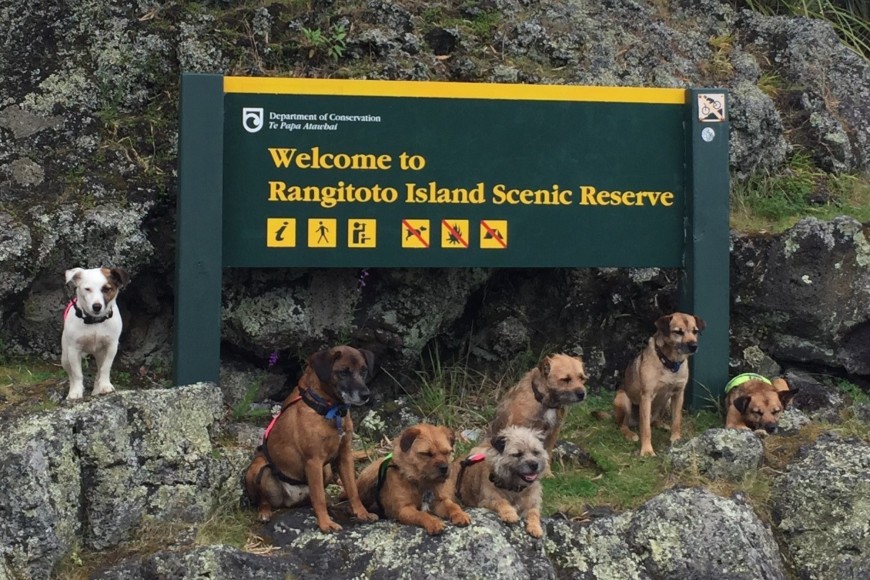The dogs, Pip and Mawhai, certainly had a nose for it. They detected the culprit around 70% of the time, and even some of their false positives (when they thought they’d found the organism, but hadn’t) were actually other species of Phytophthora.
Overall, the research was a good proof-of-concept with many potential applications – for example the detection of Phytophthoracontaminated soil in nursery specimens and on earth-moving equipment, or checking cargo and passengers being brought into pest-free areas, in much the same way that dogs are now used to detect substances at airports. In Australia, bushfire brigades have already used dogs to check vehicles for the spread of a Phytophthora species damaging to eucalypts.
Dogs also offer promise in the detection and management of small mammalian predators, in addition to trapping efforts. Traps only work if the target animal will approach and then interact with a trap. Some are trap-shy – they won’t go anywhere near a trap, or are very wary of a bait, so they survive control operations. It’s estimated that the per-hectare cost of eradicating the last 5% of a population of predators is more than ten times what it costs to eradicate the first 95%.
According to Manaaki Whenua’s Dr Al Glen, writing in a recent review for the Kiwi Rescue MBIE research programme, the advantage of dogs over traps is that they can follow scent trails, so don’t just depend on the target animal approaching a specific point. By following a scent trail, dogs can quickly track down animals that otherwise would avoid capture or detection. In this way, dog-handling teams have played an important part in creating and maintaining many of Aotearoa New Zealand (AoNZ)’s predator-free sanctuaries – for example, eradicating the last possums from Kapiti Island in 1986, block by 40-hectare block, after intensive trapping had eliminated most of them. Dogs were also used in a rat incursion on Motutapu Island in 2018 and a stoat incursion on the same island in 2021. In both cases, the dogs quickly narrowed down the location of the predators, aiding optimal trap and lure placement to catch the targets.
Dogs are also being used in the planning of eradication efforts by helping to gather information about the abundance, distribution and patterns of movement of a target species. For example, preparations have been made to eliminate feral cats from Auckland Island in the New Zealand sub-Antarctic. During a preliminary research and monitoring trip in 2019, dog-handling teams located more cat scats than human searchers did alone, and also detected nine cats without recourse to scats. By analysing DNA from the scats, EcoGene®, our DNA diagnostic service (ecogene.co.nz), was able to identify individual cats. The locations where the scats were found allowed researchers to trace how the cats travelled across the island.

Not to be sniffed at: detection dogs help to keep Rangitoto Island, a reserve in the Hauraki Gulf, pest-free.
In other recent work for Predator Free 2050, Manaaki Whenua scientist Dr Emma Feenstra investigated the potential contribution to New Zealand’s predator-free goals of dogs trained to detect possum scat and to differentiate scat from different possums. In northwestern Taranaki, dogs with handlers searched for possum scat in 8-hectare “cells”, to see if discovery of scat could enable better targeting of control measures to particular cells. The work showed that dog teams were able to rapidly assess an area for possum presence, even in areas with very few possums, thereby enabling more precise application of control.
Dogs clearly have potential to contribute to predator control. Suggested future research includes work on the optimal search paths followed by dog-handler teams, whether it’s better to train dogs on specific animal species’ scats or to find a range of scats then use DNA analysis to identify the species, the best ways to eliminate predator dens once found, and the possibilities of using detection dogs to identify diseases carried by invasive animal species.

